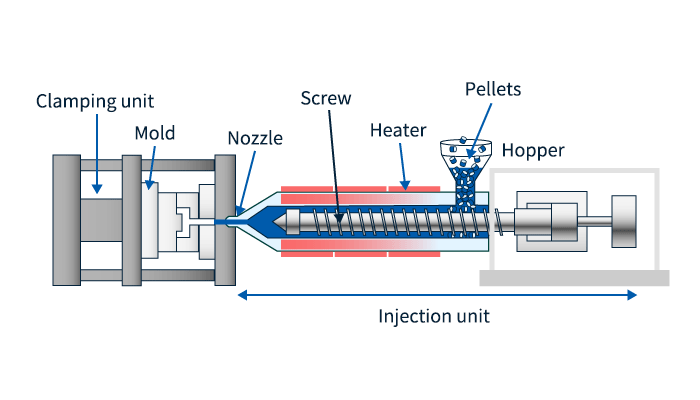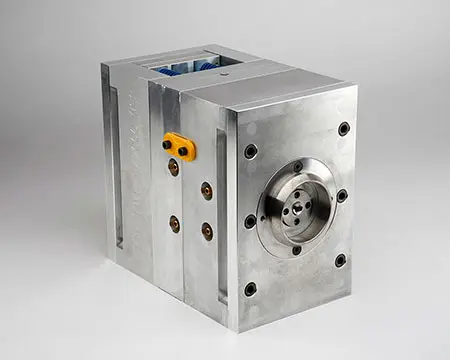The Function of Plastic Injection Molding in Creating Cost-efficient Industrial Parts
The Function of Plastic Injection Molding in Creating Cost-efficient Industrial Parts
Blog Article
Recognizing the Essentials of Plastic Injection Molding Processes
Plastic injection molding offers as a keystone of modern-day manufacturing, offering a methodical approach to generating intricate elements with precision. Discovering these crucial components can expose how even small changes can lead to considerable improvements in manufacturing end results, increasing questions concerning the capacity for development in this established procedure.
What Is Plastic Injection Molding?
Plastic shot molding is an extensively used production procedure that changes thermosetting and polycarbonate materials right into accurate and intricate shapes. This strategy is favored for its capacity to produce high quantities of the same parts with remarkable precision, making it an important approach in various markets, consisting of automobile, customer items, and medical gadgets.
The procedure involves melting the selected plastic product and infusing it into a mold under high stress. The mold and mildew, designed to the specs of the wanted component, allows the molten plastic to take form as it cools and strengthens. As soon as the material has solidified, the mold and mildew is opened up, and the ended up component is ejected.
Plastic shot molding offers a number of benefits, including minimized waste, uniformity in production, and the ability to incorporate detailed designs that may be testing with various other making methods. Additionally, it supports a broad variety of products, each supplying one-of-a-kind residential properties that can be customized for details applications. As sectors proceed to introduce, plastic injection molding stays at the leading edge, making it possible for the growth of innovative items that satisfy progressing customer demands.
The Injection Molding Refine
The shot molding procedure is an advanced method that includes several key stages to generate high-grade plastic parts. Plastic pellets are fed into a heated barrel where they are thawed right into a viscous liquid. This molten plastic is after that infused under high pressure right into a precision-engineered mold, which forms the material right into the desired kind.
As soon as the mold is loaded, the plastic is allowed to cool and strengthen, taking the form of the mold cavity. Air conditioning time is critical, as it impacts the cycle time and the final residential or commercial properties of the molded component. After sufficient air conditioning, the mold opens up, and the completed component is expelled using ejector pins.

Products Utilized in Injection Molding
Numerous materials can be utilized in the injection molding process, each offering unique residential properties that accommodate details applications. One of the most generally made use of products consist of thermoplastics, thermosetting plastics, and elastomers.

Thermosetting plastics, like epoxy and phenolic resins, go through a chemical adjustment during the treating procedure, resulting in a stiff, stringent structure. These materials are excellent for applications needing high warmth resistance and architectural stability, often used in automobile components and electrical insulators.
Elastomers, consisting of silicone and rubber-based products, supply adaptability and strength. Their special residential properties make them suitable for applications that demand elasticity, such as gaskets and seals.
In addition, specialized materials like bio-based plastics and composites are acquiring traction for their environmental advantages and boosted efficiency features, broadening the scope of injection molding applications in different markets. Comprehending the buildings of these products is crucial for selecting the suitable type for particular jobs.
Benefits of Injection Molding
Injection molding stands apart as a highly reliable production procedure that uses countless benefits for creating complicated get rid of precision. One of one of the most substantial advantages is the capability to produce intricate designs that would certainly be tough or difficult to attain with various other techniques (Plastic Injection Molding). The procedure enables limited tolerances and detailed attributes, ensuring top notch components
Additionally, shot molding is understood for its fast production capacities, making it a suitable option for high-volume production. When the mold is developed, parts can be produced promptly, minimizing lead times and raising general productivity. This performance not only lowers manufacturing costs yet likewise provides an one-upmanship out there.
The flexibility of products utilized in shot molding even more boosts its charm. A large range of thermoplastics and thermosetting polymers can be used, allowing suppliers to select products that best satisfy their details demands, you can look here consisting of heat, flexibility, and stamina resistance.
In addition, the procedure minimizes waste, as excess material can often be recycled and recycled. This sustainability facet adds to a decreased ecological impact, making injection molding a liable production choice. Generally, the benefits of injection molding make it a preferred technique for lots of sectors.
Factors Impacting Product Top Quality
While countless factors can influence product high quality in shot molding, recognizing these components is essential for accomplishing ideal results. Key elements include product choice, refining specifications, and mold and mildew layout.
Product option plays a vital role, as different polymers exhibit distinct residential properties that influence flowability, toughness, and thermal security. Insufficient material option can result in problems such as warping or incomplete filling.
Handling criteria, consisting of stress, cycle, and temperature level time, have to be meticulously controlled. Variations in these settings can lead to incongruities in component measurements and surface coating. Excessively high temperatures might trigger degradation of the polymer, while inadequate stress can result in short shots.
Mold layout is similarly essential, as it determines the circulation of the molten plastic and the cooling process. Poorly made mold and mildews might cause uneven air conditioning rates, resulting in dimensional errors and residual stress and anxieties.

Verdict
To conclude, plastic injection molding works as a vital production process that allows the effective production of premium components. Mastery of the injection molding process, consisting of the understanding of products and the impact of various variables on product quality, is vital for achieving optimal outcomes. The advantages of this approach, such as cost-effectiveness and layout flexibility, additional highlight its importance across numerous industries, strengthening its status as a preferred option for high-volume production.
Plastic shot molding serves as a keystone of modern-day production, offering a systematic approach to producing complex parts with accuracy.Plastic shot molding uses a number of advantages, consisting of lowered waste, consistency in manufacturing, and the capacity to integrate elaborate layouts that might be testing with various other making techniques (Plastic Injection Molding). As sectors continue to innovate, plastic shot molding continues to be at the leading edge, making it possible for the growth of advanced products that fulfill advancing customer needs
The shot molding procedure is a sophisticated strategy that entails several essential phases to create high-quality plastic elements.In verdict, plastic injection molding serves as an site here essential production process check these guys out that enables the reliable manufacturing of high-quality parts.
Report this page